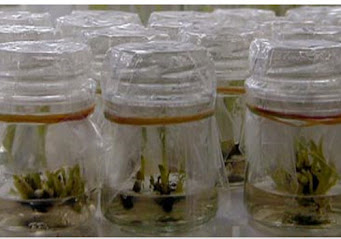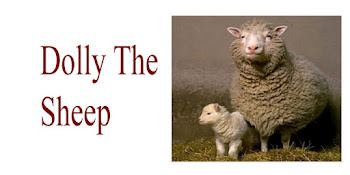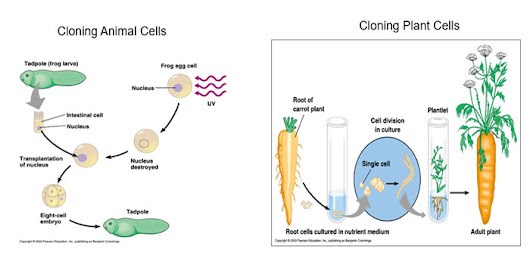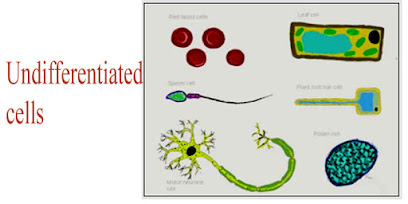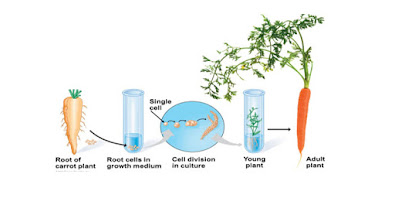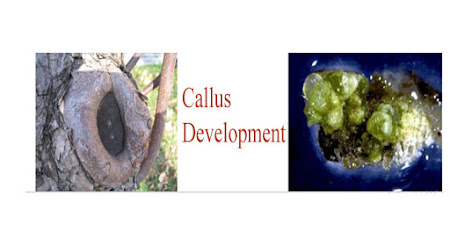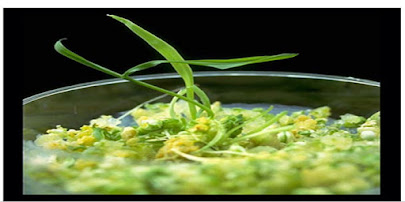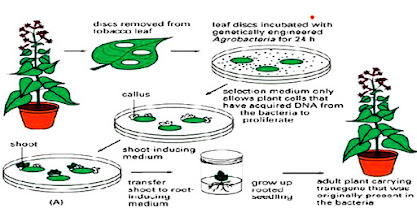What is plant tissue culture:
Introduction to plant tissue culture:
What is undifferentiated cells:
- undifferentiated cells in case of animals are called stem cells.
- while in case of plants are called meristematic cells.
Why tissue culturing is done:
- it is basically done for the production of clones of the plants that can produce good quality flowers and fruits having particular traits.
- by using this technique we can produce good quality mature plants very quickly.
- by using this technique we can produce multiple number of the plants when there is absence of the seeds or the necessary pollinators required to produce seeds.
- more we can produce whole plant from few cells and of modified one in genetic makeup.
- as the plants in this technique produced in sterile nutrient environment so there are less chances of transmission of disease.
- this technique allow seeds to germinate that otherwise have very low chances of germination and further growth.
- this technique is used for cleaning particular plant from the viral infection and to get “clean stock” of these viral free plants quickly for agriculture or horticulture purpose.
Procedure of tissue culture:
- Adult plants have Totipotent cells these cells have the ability to give rise to totally differentiated plant . so for this technique we can collect totipotent cells from the mature plant and use them to produce clone of that plant.
- now in modern tissue culturing the procedure is performed in the aseptic conditions.
- mostly the living plant material in the environment are contaminated on their surface or can be from interior it can be with micro-organism. so for plant tissue culturing surface sterilization for the starting material that is also called explant is performed with the chemical solution usually with the alcohol and sodium or with calcium hypochlorite.
- then these sterile explants are placed on the surface of the solid culture medium. or sometimes it can be directly placed in the liquid culture medium in case when suspension culture is required.
- composition of culture medium consist of inorganic salt, few organic nutrients, vitamins and plant hormones.
Hormones in media:
- there are two hormones that effect plant’s differentiation:
- like Auxin is for the stimulation of the roots development of the plant.
- for the stimulation of the shoot development is cytokinin.
- basically the ratio of these two hormones can determine the development of the plant:
- like if level of auxin is higher than the level of cytokinin roots development starts.
- similarly if the level of cytokinin is higher as compare to the level of the auxin the shoot development starts.
- if the level of Auxin is equal to the level of the cytokinin then the callus development take place.
What is callus development:
- Callus can be define as the blob of tissues of the undifferentiated cells.
- as a result of the wound this callus is naturally develop on the plant surface .
- it can be keep on further developing or can stop further divide.
- the culture medium also contain a gel that is agar which is with the proper mixture of nutrients like sugar, vitamins, and hormones and these collectively can be called growth promoter.
- these causes the plant parts to grow at the very rapid rate and produce new plantlets very quickly.
- it is estimated that only one chrysanthemum apex when placed in the culture medium it can produce approximately 10,00,000 new plantlets in one year.
- when the culture grows the grow pieces are then sliced off and then placed onto the new sub-culture to allow growth or it can be to alter the morphology of the culture.
Plant tissue culture complete overview:
Plant tissue culture Application:
- for the commercial production of the plant that will be useful for the potting , landscapes and florist subjects.
- it will be useful in order to conserve rare or endangered plant specie.
- it will be useful in order to monitor or screen plant for advantageous characteristics. like checking for herbicides tolerance and resistance.
- the large scaled growth of the plants that is done in the liquid culture medium done in the bioreactor for the production of the valuable compounds, for example plants-derived secondary metabolites and like recombinant protein used for biopharmaceuticals.
- by protoplasm diffusion to cross distantly related specie and to generate novel hybrids.
- it is used for the production of clean plant material from the infected plant stock that is infected from viral infection or any other pathogen.
- by this technique we can obtain sterile hybrid species that are identical



